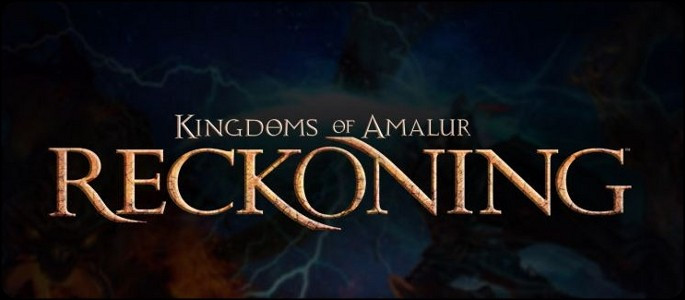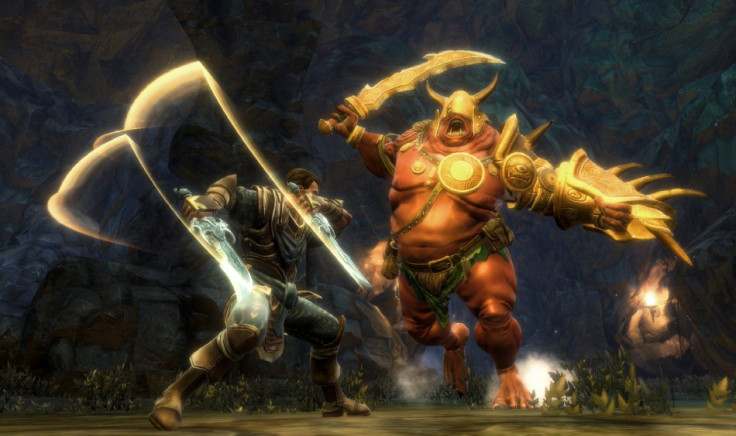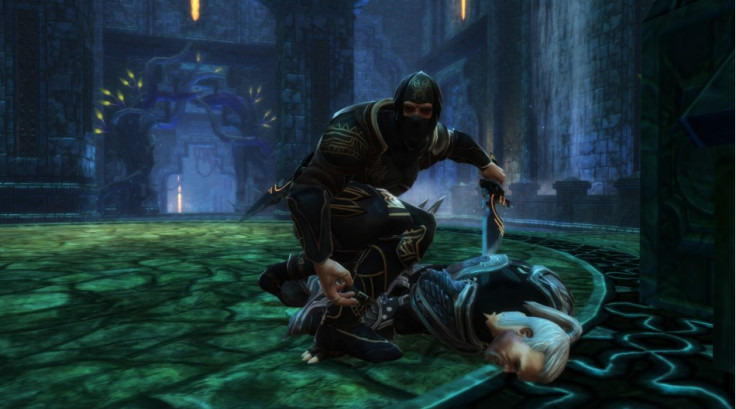Kingdoms of Amalur: Reckoning Review (PS3 and Xbox 360)

Shining though the game's unashamedly old-school and at times cliched plot, Kingdoms of Amalur's satisfying and chunky combat makes the game an accessible, pretty and bloody good RPG well worth a look for both veterans and newcomers to the genre.
Kingdoms of Amalur: Reckoning is not an innovator in the role-playing genre. Set in the fantasy world of Amalur, the game ticks all the standard RPG boxes, seeing you take the role of humanity's last hope against the unstoppable forces of evil - in this case an immortal race of elf/pixie-like creatures known as the Winter Fae.
Truth be told, the game's setting and plot is its weakest point, which is surprising considering the mythos and story were coined by famous Demon Wars and Forgotten Realms writer Robert Anthony Salvatore. In Amalur the plot never really develops past goodies versus baddies, seeing you fight the evil Winter Fae army as it rampages across the land.
That said, while the game's story isn't all that engaging, it does do a more than decent job of setting you on the right path, offering a decent premise and foundation for its combat and levelling-up systems - two points that Amalur truly shines at.

The story takes place in a world where fate is key. Putting aside the notion of freedom, in Amalur everything is running along a pre-written path, one that can be read by certain specially trained individuals known as fate weavers. As the game's protagonist, you take on the role of a special human being that - having been resurrected by a mad gnome scientist - has been granted the ability to change fate.
Opening to see you awaken from death, Amalur immediately emphasises the fact that your character is a blank slate, ready to be molded using the game's flexible and user friendly leveling system. In Amalur there are three schools of combat; finesse, might and sorcery - equating to rogues, warriors and mages. Within each school are several special abilities and general upgrades - all pretty standard fodder for an RPG - however, what sets Amalur apart is its emphasis on cross school development.
Where most RPG's reward a focused approach, Amalur's system is about as flexible leveling system as we've ever encountered. This is in no small part thanks to its destiny system. Destines see you pick your future path from a set of archetypal RPG heroes. Each destiny confers special abilities and bonuses to the character and becomes available as you invest points in one of the schools of combat - invest all your stats in the magic school and you can become an archmage, put them all in finesse and you can become an assassin, invest in both and you can become a spellcloak.
The beauty of the system is that you can change your destiny whenever you choose. This not only means that you can specialise as a cross school character but also, in situations that require a focus on a particular type of combat, alter your destiny to get abilities more relevant to the task at hand.

The open nature of Amalur's character leveling systems is one of the game's prime selling points, perfectly complementing its greatest strength - combat. Running in completely the opposite direction to the hardcore fantasy styles seen in titles like Dark Souls and Monster Hunter, Amalur's combat is a meaty over the top affair that is, for lack of a better word, awesome. Letting you send scores of enemies flying with a swing of your greatsword, or fill an entire room with lighting, Amalur's combat is insanely satisfying.
The game lets you wield two weapons at a time, each of which is mapped to either the X or Y buttons. Abilities and magic are accessed by pressing down on the right trigger, which brings up a radial menu linking to four mapped skills. Additionally, for those of a more stealthy persuasion, Amalur houses its own sneak mode. Activated with a press of the right bumper, the mode lets characters sneak up on enemies and enact a stealth kill - a particularly satisfying way of seeing your character perform bloody and brutal strikes on the unaware enemy.

It's a good thing that Amalur's combat is so satisfying, as killing things is pretty much the central mechanic of the game. There are dialogue options they never really have any depth past accepting or declining quest options. Additionally, in terms of variety, quests very rarely extend past the formulaic go from A to B model.
Luckily, as well as the engaging and fun combat, Amalur's graphics and setting do a decent job of keeping you engaged, making you forget the fact that there's not much gameplay variety. The artwork is from veteran comic artist Todd McFarlane, and while the character designs aren't iconic - featuring a visual design and tone fairly similar to the one used in the Fable series of games - they are perfectly decent. Animations are also nice, complementing the game's responsive controls.
Summing up, though Kingdoms of Amalur: Reckoning doesn't reinvent the wheel it is a solid and fun RPG. While the plot isn't a work of Shakespeare it does provide a decent backdrop for the game as a whole, showcasing Amalur's finer points - of which there are many. Chief among Amalur's charms are its combat and character leveling mechanics. Complementing each other perfectly there are few RPG's on the market that offer such an accessible and entertaining system that lets players really feel like they're in control of their character's development, without bogging them down with statistics. All this adds up to make Amalur a great choice for existing RPG fans and newcomers looking to test the water.
The Good:
- Engaging, responsive and fun combat
- Open and intuitive character leveling system
- Good visuals complemented by fluid animations
The Bad:
- Functional, but un-astounding story
- Not a lot of variety in quests
Overall:
4/5
© Copyright IBTimes 2025. All rights reserved.





















